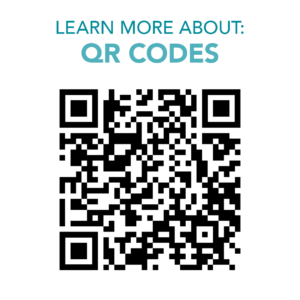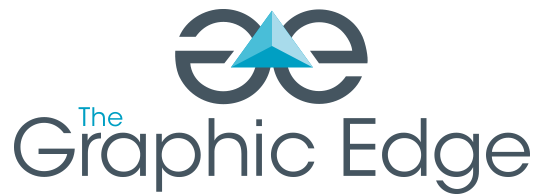 We’ve seen a huge spike in people requesting QR codes recently and want to educate our followers on why they might be a perfect fit for your next business card, event invitation, or other printed piece. The “QR” stands for quick-response, which was a huge improvement from the original ways links were “sent” on printed pieces or shown on screens.
We’ve seen a huge spike in people requesting QR codes recently and want to educate our followers on why they might be a perfect fit for your next business card, event invitation, or other printed piece. The “QR” stands for quick-response, which was a huge improvement from the original ways links were “sent” on printed pieces or shown on screens.
Traditionally, when people have designed printed pieces with online components, the only way to get people to reach the digital version was through a typed-out URL. In some cases, the URL was short and easy to navigate to. However, with longer, more specific links, the time it might take to spell out a web address manually in your phone or computer’s browser would be too much work for visitors to even attempt. In an effort to combat this, URL shorteners became popular, jumbling up the link as a series of random letters and numbers to also require being typed manually. While sometimes an improvement, there was still a hesitation to fully embrace it as the solution.
Enter: the QR code. It was invented in 1994 and really gained steam and popularity in the 2010s. During that time period phones often required an app to read the codes, which deterred many from committing to using it to its fullest extent. The world changed in 2020 with the COVID-19 pandemic, which brought industry shutdowns, health concerns, and devastation to many people, businesses and economies. But one trend that gained huge popularity during that time was the QR code. Many phones, by this time, were able to read QR codes simply by viewing it through the camera lens, and it enabled people to open and read traditional paper documents on their phone without physically touching anything. During a time when people were advised to mask up and stay six feet apart, this was a solution to a growing issue as the world tried to maneuver during unprecedented times.
As the world recovered (well, still recovers) from the pandemic, we’ve seen the QR code incorporated more and more into our designs. Business cards can now feature a QR code which automatically opens up to create a contact in your phone. Restaurants can provide a QR code on a table rather than providing a printed menu. Mail can include a QR code to take recipients directly to the link they need to access.
The possibilities are endless!
